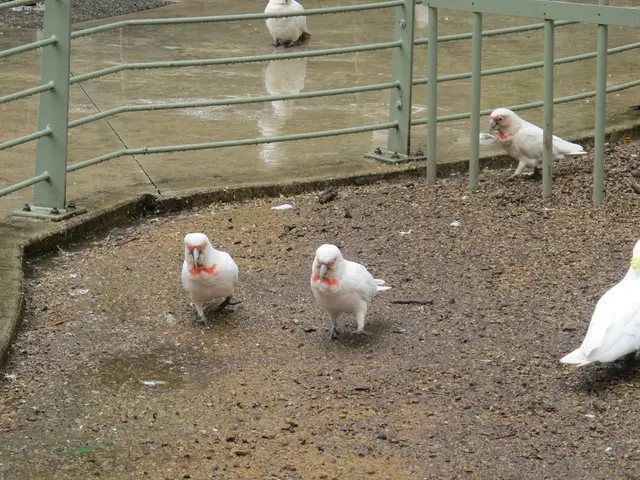Fundamental Guidelines for Mending and Upkeep of Roof Rain Spouts
In the quest to maintain a resilient home, one often overlooked aspect is the gutter system. This unsung hero plays a crucial role in safeguarding your property from water damage, mold, and structural issues. Here's a comprehensive guide on how to effectively maintain your gutters and ensure they function optimally.
First and foremost, consider the type of trees and foliage around your home. Trimming overhanging branches and opting for low-maintenance landscaping can significantly reduce debris falling into your gutters.
A well-functioning gutter system is essential for any resilient home, and a proactive approach to gutter health is crucial. To maintain gutters and prevent water damage, mold, and structural issues in your home, clean your gutters at least twice a year, ideally in late spring and early fall, more often if you have many trees nearby.
Key maintenance steps and tips include:
- Gather essential tools: Use a sturdy ladder, work gloves, safety glasses, a garden hose with a spray nozzle, a plastic scoop or small trowel, and a bucket or tarp to catch debris.
- Clear debris and flush downspouts: Start by clearing the downspouts to remove clogs using a hose or flexible brush, then scoop out debris from gutters. Flush gutters with water to confirm unobstructed flow.
- Inspect for damage: Check for sagging, cracks, holes, or signs of leaking. Watch for water overflow during rain, water stains on siding, and pooling near your foundation; these indicate gutters need repair.
- Install gutter guards: Consider adding quality gutter guards that reduce debris buildup while allowing water flow, decreasing cleaning frequency and the risk of clogs.
- Ensure proper water diversion: Make sure downspouts direct water at least six feet away from the foundation with extensions or splash blocks to prevent foundation damage and basement flooding.
- Trim nearby trees: Keep tree branches trimmed to minimize leaves and debris falling into gutters.
- Address minor issues promptly: Fix leaks, loose brackets, or small blockages quickly to avoid worsening damage such as mold growth, fascia rotting, and structural degradation.
- Be mindful of ice dams: In colder climates, clear gutters and downspouts before winter to prevent ice dam formation that can damage shingles and roof decking.
Regular gutter maintenance protects your home by directing water safely away from roofing materials, fascia, siding, and the foundation, preventing water damage, mold, mildew, basement moisture, and costly structural repairs.
If you notice extensive damage, significant rust, or sagging gutters, it's advisable to seek professional help for repair or replacement. Periodic professional maintenance, similar to car servicing, can help keep gutters in prime condition year-round. Professionals have the expertise and tools to handle gutter repairs safely and effectively, and they can also address underlying problems like roof or fascia issues.
Routine gutter cleaning and inspections are recommended, with a focus on spring and fall for thorough checks. During bi-annual inspections, larger maintenance tasks such as clearing downspouts and directing water away from the home's foundation should be addressed.
Proper gutter maintenance ensures the longevity of your gutter system and guards against potential water damage that can cause harm to your home.
Adopting a low-maintenance home-and-garden landscape reduces the frequency of gutter cleaning, as less debris falls from overhanging trees into the gutters. A well-maintained gutter system, including regular cleaning and inspections, contributes significantly to the overall lifestyle and resilience of a home, protecting it from water damage, mold, and structural issues.




